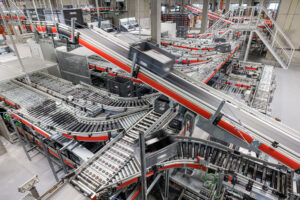Sustainability is not just a trendy topic—for many businesses, it is a must to stay viable. With our ever-changing world today, it can be hard to predict what will happen next in your business. Business may flourish one day, and the next fall into a recession. Building resiliency means exploring economic, social, and environmental sustainability practices. This is especially true of your business’ supply chain, where supply-demand volatility, labor shortages, stricter worker ergonomic regulations, warehouse space availability, and rising shipping costs all create challenges for sustainability and viability.
 8 Ways to improve your supply chain sustainability
8 Ways to improve your supply chain sustainability
- Craft your sustainability strategy: set clear goals, timelines, and KPIs
- Optimize shipping: reduce cost, energy, and materials with just-right packaging sizes and more efficient deliveries
- Source sustainable materials: consider how your components could be part of a circular economy
- Set sustainability standards for your suppliers: track that their practices align with your sustainability goals
- Minimize overstock: reduce resources spent on sitting inventory and prevent dumping of unsold products later
- Reduce warehouse energy costs: lower your bills and become less reliant on non-renewable energy sources
- Nudge regulators and consumers: advocate for industry standards and best practices
- Explore how to share resources: create alliances within or outside your industry with like-minded businesses
 As a full-package integrator for automating fulfillment operations, with over 50 years global experience, it is worth pointing out that automation can actually help with some of the list above.
As a full-package integrator for automating fulfillment operations, with over 50 years global experience, it is worth pointing out that automation can actually help with some of the list above.
Adding automation to a greenfield or brownfield DC can reduce energy costs, reduce the total square footage needed for operations (sometimes meaning a consolidation of buildings!), and create just-right size packaging for reduced waste and shipping costs. Additionally, automation reduces labor, which in turn means fewer cars driving to and from work, which can sometimes be the greatest emissions from a warehouse.
To learn about TGW’s Smart Energy Strategy, visit: https://www.tgw-group.com/technologies/smart-energy
To start a conversation about bringing an end-to-end automation solution to your facilities, email us.info@tgw-group.com.







